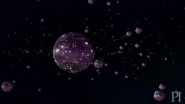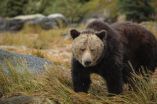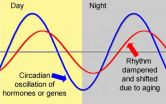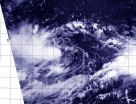(Press-News.org) WASHINGTON (July 17, 2014) — The road to finding a cure for HIV-1 is not without obstacles. However, thanks to cutting-edge research by Douglas Nixon, M.D., Ph.D., and colleagues, performed at the George Washington University (GW), Oregon Health & Science University, the University of Rochester, and UC San Francisco, the scientific community is one step closer to finding a viable immunotherapy option for HIV-1, using an immune attack against a fossil virus buried in the genome.
A major hurdle in eradicating HIV-1 has been outsmarting the frequent mutations, or changing coats of the virus caused by its high rate of replication. Researchers have focused on neutralizing antibodies directed against the HIV-1 envelope in order to stop the virus, but the antibodies haven't been able to keep up with this constant change. Nixon's research team found that the right antibody directed against an ancestral fossil virus buried within everyone's genomes might be able to target HIV-1 and neutralize it.
"What we've found is an antibody that recognizes these fossil viruses within all our genomes, which can neutralize HIV-1 in a way that has never been seen before," said Nixon, chair of the Department of Microbiology, Immunology, and Tropical Medicine at the GW School of Medicine and Health Sciences. "We have found in vitro, in the test tube, that you can actually have an antibody work against HIV-1, which is not directed against the HIV-1 virus itself."
In his research, Nixon and colleagues found that by targeting the fossil virus — an ancestral version of a retrovirus that has become a largely useless part of our DNA — that these antibodies could focus on a single fixed envelope, as it does not change like the constant changes of HIV-1's envelope outer coat. This discovery provides a new, therapeutic target to beat this particular coat, or variation.
INFORMATION:
The article, "An Antibody Recognizing Ancestral Endogenous Virus Glycoproteins Mediates Antibody Dependent Cellular Cytotoxicity on HIV-1 Infected Cells" was published in the Cutting Edge section of the Journal of Immunology. This section presents short reports describing significant advances in the area of immunology; chief criteria for acceptance are scientific novelty and quality, originality, clarity, and conciseness.
The authors on this publication are Henri-Alexandre Michaud, Ph.D., of the Division of Experimental Medicine, University of California, San Francisco and the Equipe Immunité et Cancer, Institut de Recherche en cancérologie de Montpellier, Montpellier, France; Devi SenGupta, M.D., of the Division of Experimental Medicine, University of California, San Francisco; Miguel de Mulder Ph.D., of The George Washington University; Steven G. Deeks, M.D., of the Positive Health Program, University of California, San Francisco; Jeffrey N. Martin, M.D., Division of Epidemiology, University of California, San Francisco; James J. Kobie, Ph.D., assistant professor in the Department of Medicine, Infectious Diseases at the University of Rochester Medical Center; Jonah B. Sacha, Ph.D., at the Vaccine and Gene Therapy Institute at Oregon Health & Science University; and Douglas F. Nixon. M.D., Ph.D. of The George Washington University.
Funding for this work came from the National Institutes of Health, the Bill and Melinda Gates Foundation, The Foundation for AIDS Research, and The Peter And Shelagh Godsoe Family Foundation.
Media: For the full article or to interview Dr. Nixon, please contact Lisa Anderson at lisama2@gwu.edu or 202-994-3121.
About the GW School of Medicine and Health Sciences:
Founded in 1824, the GW School of Medicine and Health Sciences (SMHS) was the first medical school in the nation's capital and is the 11th oldest in the country. Working together in our nation's capital, with integrity and resolve, the GW SMHS is committed to improving the health and well-being of our local, national and global communities. smhs.gwu.edu
GW researcher unlocks next step in creating HIV-1 immunotherapy using fossil virus
Douglas Nixon, M.D., Ph.D., was published in the Journal of Immunology for his cutting-edge research
2014-07-17
ELSE PRESS RELEASES FROM THIS DATE:
Oregon geologist says Curiosity's images show Earth-like soils on Mars
2014-07-17
EUGENE, Ore. -- Soil deep in a crater dating to some 3.7 billion years ago contains evidence that Mars was once much warmer and wetter, says University of Oregon geologist Gregory Retallack, based on images and data captured by the rover Curiosity.
NASA rovers have shown Martian landscapes littered with loose rocks from impacts or layered by catastrophic floods, rather than the smooth contours of soils that soften landscapes on Earth. However, recent images from Curiosity from the impact Gale Crater, Retallack said, reveal Earth-like soil profiles with cracked surfaces ...
Is the universe a bubble? Let's check
2014-07-17
Never mind the big bang; in the beginning was the vacuum. The vacuum simmered with energy (variously called dark energy, vacuum energy, the inflation field, or the Higgs field). Like water in a pot, this high energy began to evaporate – bubbles formed.
Each bubble contained another vacuum, whose energy was lower, but still not nothing. This energy drove the bubbles to expand. Inevitably, some bubbles bumped into each other. It's possible some produced secondary bubbles. Maybe the bubbles were rare and far apart; maybe they were packed close as foam.
But here's the thing: ...
Orthopedic surgery generally safe for patients age 80 and older
2014-07-17
ROSEMONT, Ill.─Over the past decade, a greater number of patients, age 80 and older, are having elective orthopaedic surgery. A new study appearing in the Journal of Bone and Joint Surgery (JBJS) found that these surgeries are generally safe with mortality rates decreasing for total hip (THR) and total knee (TKR) replacement and spinal fusion surgeries, and complication rates decreasing for total knee replacement and spinal fusion in patients with few or no comorbidities (other conditions or diseases).
"Based on the results of this study, I think very elderly patients, ...
Study led by indigenous people uncovers grizzly bear 'highway'
2014-07-17
A novel, First Nations-led research collaboration has revealed a previously undocumented grizzly bear aggregation in coastal British Columbia, one of the most southerly aggregations of salmon-feeding grizzlies in North America. Using non-invasive DNA analysis, the authors describe a grizzly bear "highway," identifying nearly 60 individual bears, many who travelled hundreds of miles from surrounding areas to feed on autumn-spawning salmon in the Koeye River. The research was guided by the customary law and cultural practices of the Heiltsuk First Nation and recently published ...
Lipoic acid helps restore, synchronize the 'biological clock'
2014-07-17
CORVALLIS, Ore. – Researchers have discovered a possible explanation for the surprisingly large range of biological effects that are linked to a micronutrient called lipoic acid: It appears to reset and synchronize circadian rhythms, or the "biological clock" found in most life forms.
The ability of lipoic acid to help restore a more normal circadian rhythm to aging animals could explain its apparent value in so many important biological functions, ranging from stress resistance to cardiac function, hormonal balance, muscle performance, glucose metabolism and the aging ...
How the brain stabilizes its connections in order to learn better
2014-07-17
Throughout our lives, our brains adapt to what we learn and memorise. The brain is indeed made up of complex networks of neurons and synapses that are constantly re-configured. However, in order for learning to leave a trace, connections must be stabilized. A team at the University of Geneva (UNIGE) discovered a new cellular mechanism involved in the long-term stabilization of neuron connections, in which non-neuronal cells, called astrocytes, play a role unidentified until now. These results, published in Current Biology, will lead to a better understanding of neurodegenerative ...
NASA's Aqua satellite sees birth of Tropical Depression 10W
2014-07-17
The tenth tropical depression of the Northwestern Pacific Ocean was born as NASA's Aqua satellite passed overhead.
NASA's Aqua satellite passed over Tropical Depression 10W on July 17, as it came together northwest of the island of Yap. As Aqua passed overhead the Atmospheric Infrared Sounder (AIRS) instrument aboard captured infrared data that showed powerful thunderstorms developed around the storm's center. When AIRS gathered the data on the cloud tops, the temperatures were already as cold as -63F/-52C, indicating strong uplift has pushed them to the top of the troposphere.
At ...
NASA's TRMM satellite adds up Typhoon Rammasun's Philippines deluge
2014-07-17
Typhoon Rammasun dropped large amounts of rainfall over the Philippines, and the TRMM satellite was used to measure it from space. Rammasun is now making its way toward Hainan Island, China.
NASA and the Japanese Aerospace Exploration Agency partner on the Tropical Rainfall Measuring Mission or TRMM satellite. As TRMM orbits the Earth it has the ability to calculate rainfall occurring in storms and a rainfall analysis using TRMM and other data helps scientists calculate total rainfall.
A preliminary analysis of rainfall during the period when typhoon Rammasun was moving ...
Scientists track gene activity when honey bees do and don't eat honey
2014-07-17
CHAMPAIGN, Ill. — Many beekeepers feed their honey bees sucrose or high-fructose corn syrup when times are lean inside the hive. This practice has come under scrutiny, however, in response to colony collapse disorder, the massive -- and as yet not fully explained -- annual die-off of honey bees in the U.S. and Europe. Some suspect that inadequate nutrition plays a role in honey bee declines.
In a new study, described in Scientific Reports, researchers took a broad look at changes in gene activity in response to diet in the Western honey bee (Apis mellifera), and found ...
Measuring nurture: Study shows how 'good mothering' hardwires infant brain
2014-07-17
By carefully watching nearly a hundred hours of video showing mother rats protecting, warming, and feeding their young pups, and then matching up what they saw to real-time electrical readings from the pups' brains, researchers at NYU Langone Medical Center have found that the mother's presence and social interactions — her nurturing role — directly molds the early neural activity and growth of her offsprings' brain.
Reporting in the July 21 edition of the journal Current Biology, the NYU Langone team showed that the mother's presence in the nest regulated and controlled ...
LAST 30 PRESS RELEASES:
KIST develops eco-friendly palladium recovery technology to safeguard resource security
Statins significantly reduce mortality risk for adults with diabetes, regardless of cardiovascular risk
Brain immune cells may drive more damage in females than males with Alzheimer’s
Evidence-based recommendations empower clinicians to manage epilepsy in pregnancy
Fungus turns bark beetles’ defenses against them
There are new antivirals being tested for herpesviruses. Scientists now know how they work
CDI scientist, colleagues author review of global burden of fungus Candida auris
How does stroke influence speech comprehension?
B cells transiently unlock their plasticity, risking lymphoma development
Advanced AI dodel predicts spoken language outcomes in deaf children after cochlear implants
Multimodal imaging-based cerebral blood flow prediction model development in simulated microgravity
Accelerated streaming subgraph matching framework is faster, more robust, and scalable
Gestational diabetes rose every year in the US since 2016
OHSU researchers find breast cancer drug boosts leukemia treatment
Fear and medical misinformation regarding risk of progression or recurrence among patients with breast cancer
Glucagonlike peptide-1 receptor agonists and asthma risk in adolescents with obesity
Reviving dormant immunity: Millimeter waves reprogram the immunosuppressive microenvironment to potentiate immunotherapy without obvious side effects
Safety decision-making for autonomous vehicles integrating passenger physiological states by fNIRS
Fires could emit more air pollution than previously estimated
A new way to map how cells choose their fate
Numbers in our sights affect how we perceive space
SIMJ announces global collaborative book project in commemoration of its 75th anniversary
Air pollution exposure and birth weight
Obstructive sleep apnea risk and mental health conditions among older adults
How talking slows eye movements behind the wheel
The Ceramic Society of Japan’s Oxoate Ceramics Research Association launches new international book project
Heart-brain connection: international study reveals the role of the vagus nerve in keeping the heart young
Researchers identify Rb1 as a predictive biomarker for a new therapeutic strategy in some breast cancers
Survey reveals ethical gaps slowing AI adoption in pediatric surgery
Stimulant ADHD medications work differently than thought
[Press-News.org] GW researcher unlocks next step in creating HIV-1 immunotherapy using fossil virusDouglas Nixon, M.D., Ph.D., was published in the Journal of Immunology for his cutting-edge research





